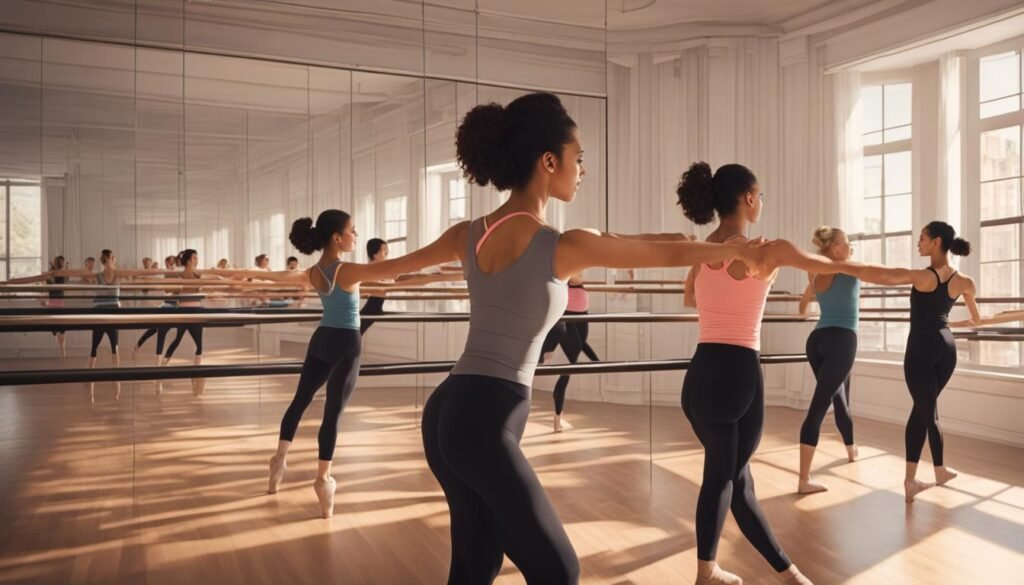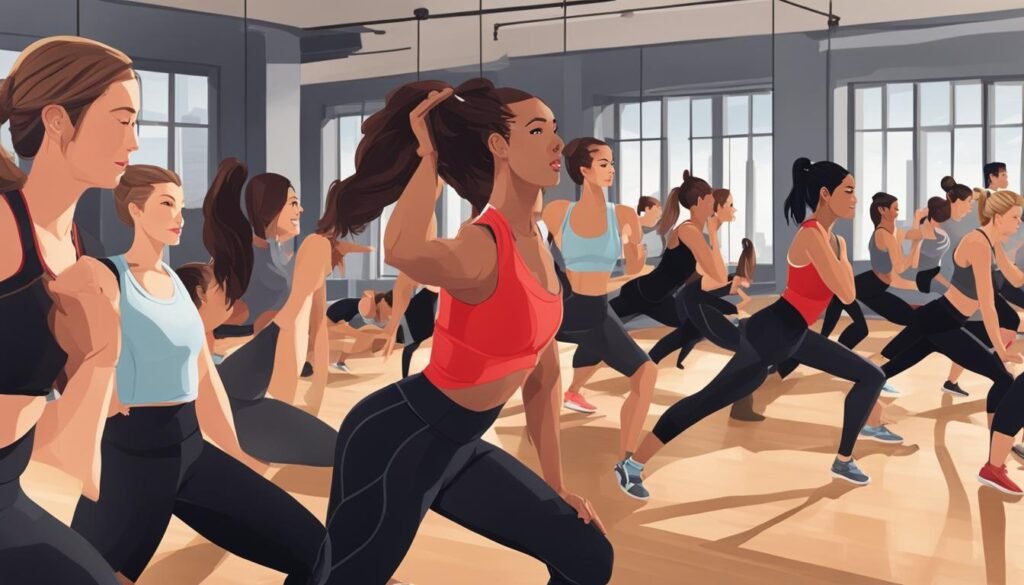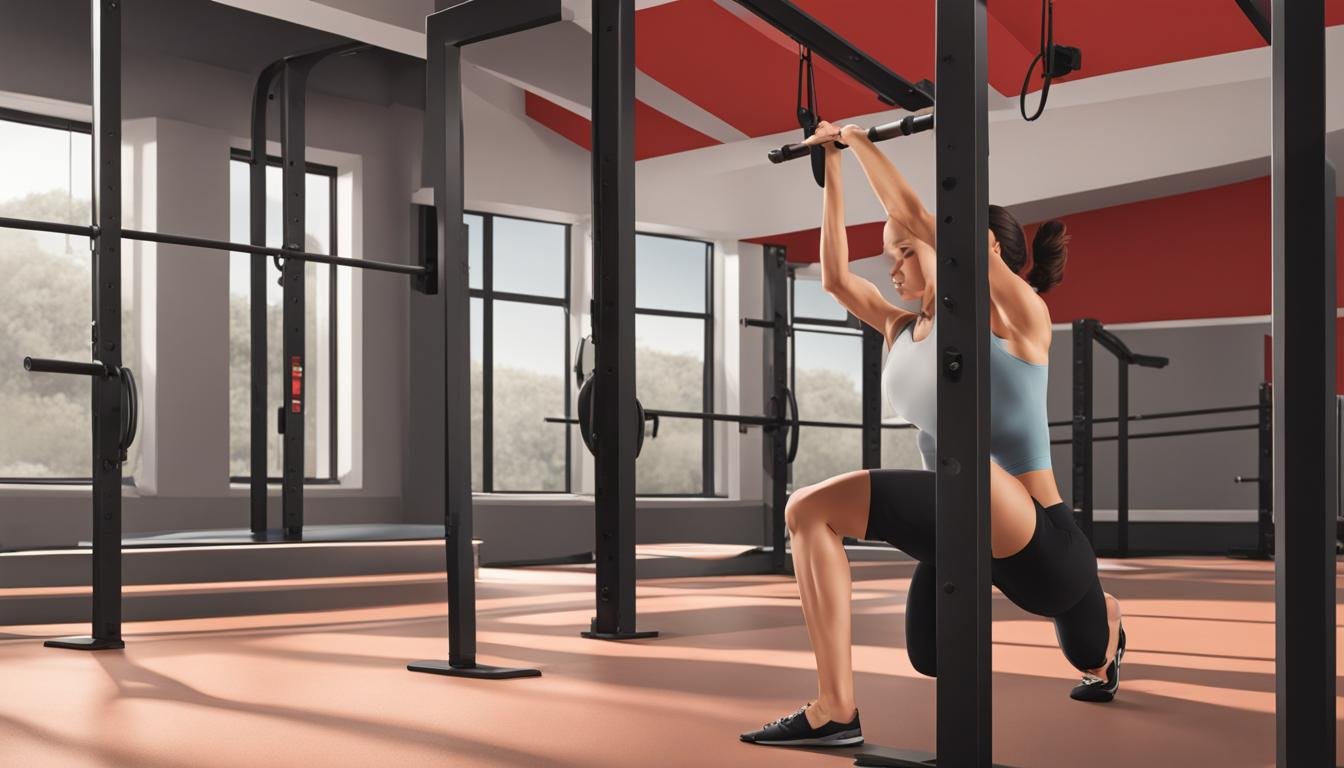After being a member at Pure Barre for two years, I made the difficult decision to quit. While Pure Barre offers a unique blend of ballet, Pilates, and yoga, it no longer aligned with my fitness goals and lifestyle preferences. The closure of gyms during the pandemic led to virtual Pure Barre classes, which didn’t provide the same value as the in-person experience. Additionally, the intense shoulder-focused exercises caused discomfort and contributed to a shoulder injury.
Furthermore, the lack of membership price reduction or freezing options during COVID was disheartening. As the pandemic brought financial uncertainty, Pure Barre’s inflexibility added to the reasons behind my decision to quit.
Key Takeaways:
- Virtual Pure Barre classes during the pandemic did not align with my fitness goals.
- Intense shoulder-focused exercises caused discomfort and led to a shoulder injury.
- The lack of membership price reduction or freezing options during COVID was a contributing factor.
The Appeal and Challenges of Pure Barre
Pure Barre offers a unique and engaging workout experience that combines elements of ballet, Pilates, and yoga. With its focus on small isometric movements and high-intensity intervals, Pure Barre helps participants improve their strength, flexibility, and overall fitness. The instructors play a crucial role in creating a motivating and supportive environment, guiding participants through each movement with precision and encouragement.
While the benefits of Pure Barre are undeniable, there are also some challenges to consider. One of the main concerns is the cost. Compared to other workout options, Pure Barre classes can be relatively expensive, especially when considering the price per class or monthly membership fees. This cost factor may make Pure Barre less accessible to some individuals.
Moreover, becoming a Pure Barre instructor requires a significant commitment. Instructors undergo intensive training to learn the techniques and principles of Pure Barre. They must demonstrate a high level of proficiency in leading classes and motivating participants. The rigorous training ensures that instructors are well-prepared to deliver quality workouts, but it also demands dedication and time.

The Benefits of Pure Barre
- Improves strength and muscle tone
- Increases flexibility and range of motion
- Enhances posture and core stability
- Provides a full-body workout
- Offers low-impact exercises, minimizing stress on joints
As a Pure Barre instructor, you have the opportunity to transform lives and positively impact others. Guiding participants through their fitness journey can be incredibly rewarding and fulfilling.
However, it’s essential to consider the demands and responsibilities that come with being a Pure Barre instructor. Teaching classes and maintaining a high energy level requires physical and mental stamina. In addition to the actual class time, instructors often spend extra hours planning routines, staying up to date with new techniques, and engaging with participants.
Before embarking on the journey to become a Pure Barre instructor or committing to regular classes, it’s important to weigh the appeal of the workout against the challenges and potential costs. Understanding the unique benefits and demands of Pure Barre will help individuals make informed decisions about their fitness goals and aspirations.
The Journey of a Barre Instructor
Considering becoming a barre instructor can be an exciting and rewarding journey. It offers an opportunity to share your passion for fitness and inspire others to achieve their goals. However, it is important to understand the dedication and commitment required to embark on this path.
For me, the journey of becoming a Pure Barre instructor started with auditions and rigorous training. It involved learning the precise movements, mastering the ballet-inspired techniques, and developing the skills to guide participants effectively. The process required time, effort, and perseverance.
Opening a Pure Barre studio is a venture that demands careful planning and coordination with the corporate office. From finding a suitable location to managing sales, marketing, and customer service, running a studio involves various responsibilities. It requires not only a deep understanding of the workout but also a keen business sense to ensure its success.
Becoming a barre instructor is not without its challenges. Balancing teaching with a full-time job can be demanding, and the hours can be long and irregular. Additionally, the financial aspect can be a concern, as the hourly rate for instructors may not always reflect the amount of time spent outside of class. Purchasing necessary items like “sticky socks” can also add to the expenses.

Despite the challenges, being a Pure Barre instructor can be incredibly rewarding. The joy of introducing others to the workout and witnessing their progress is fulfilling. The sense of community within the Pure Barre studio is also a unique aspect that fosters support and friendship.
However, it is essential to carefully consider whether the journey of becoming a barre instructor aligns with your goals and priorities. It requires a significant investment of time, energy, and resources. Ultimately, it is important to find a balance that allows you to pursue your passion for fitness while also taking care of yourself.
The Struggles of Being an Instructor
Being a Pure Barre instructor comes with its own set of challenges and difficulties. While the role may seem glamorous and rewarding, there are various struggles that instructors face in their journey. Here are some of the main challenges that Pure Barre instructors encounter:
- The Time Commitment: Teaching Pure Barre classes requires a significant time commitment. In addition to the actual class time, instructors need to prepare playlists, plan lessons, and stay up to date with the latest techniques. This can be demanding, especially for those who have other jobs or responsibilities.
- Low Hourly Rate: Despite the dedication and effort that instructors put into their work, the financial compensation may not match their expectations. The hourly rate for teaching Pure Barre classes may be lower than anticipated, considering the time spent outside of class on lesson planning, choreography, and client support.
- Additional Responsibilities: Instructors are often responsible for more than just teaching classes. They may need to handle administrative tasks, such as managing the studio schedule, promoting classes, and dealing with customer inquiries. These additional responsibilities can add to the workload and potentially take away from the enjoyment of teaching.
- Financial Impact: Becoming a Pure Barre instructor often comes with its own expenses. Instructors may need to invest in specialized clothing, equipment, and accessories like “sticky socks.” These costs, coupled with the potential low hourly rate, can create financial strain for instructors.
Despite these challenges, many instructors find fulfillment in motivating and inspiring their clients through the Pure Barre workout. However, it’s important to be aware of and prepared for these struggles to ensure a realistic understanding of the role.
One instructor’s perspective:
“Teaching Pure Barre classes has been an incredibly rewarding experience, but it hasn’t come without its fair share of struggles. Balancing the demands of teaching, personal fitness, and other commitments can be challenging. Additionally, the financial aspect of being an instructor was not as lucrative as I had hoped. Despite these obstacles, the joy of seeing my clients achieve their goals and the sense of community within the studio kept me going. Ultimately, the decision to continue or quit as a Pure Barre instructor depends on one’s personal preferences, circumstances, and priorities.”
The Breaking Point and Decision to Quit
After two years of being a dedicated Pure Barre instructor, I reached a breaking point and made the difficult decision to quit. While there were many benefits to teaching and being a part of the Pure Barre community, I realized that it was no longer aligned with my fitness goals and lifestyle. The increasing demands and time commitments became overwhelming, leaving me with little energy to fully engage in my own workout and personal growth.
One of the main factors that led to my decision was the lack of time I had to focus on my own fitness journey. As an instructor, I was expected to teach multiple classes each week, prepare choreography, and constantly stay updated with Pure Barre’s techniques. This left me with little time to take care of myself and explore other fitness options that better suited my needs.
Additionally, the financial aspect played a role in my decision. While being a Pure Barre instructor provided a sense of fulfillment, the low hourly rate and the expenses associated with purchasing equipment like “sticky socks” started to weigh on me. As my career outside of fitness began to flourish, I found it increasingly difficult to justify the financial sacrifice of teaching Pure Barre.
The realization of the misalignment
Ultimately, the breaking point came when I realized that Pure Barre was no longer aligned with my fitness and lifestyle goals. The program, although effective for many, no longer provided the challenge and variety I was seeking in my workouts. I wanted to explore different types of exercises and activities that would better serve my overall well-being and meet my evolving fitness goals.
While my time with Pure Barre was valuable and I appreciated the benefits it offered, I had to prioritize my personal and professional growth outside of the studio. This led to the difficult decision to quit and pursue other avenues that aligned better with my current lifestyle and aspirations.
Reflecting on the Pure Barre Experience
As I look back on my journey with Pure Barre, I can’t help but reflect on the reasons that led me to quit. It was not an easy decision, considering the initial appeal of this unique workout that combined ballet, Pilates, and yoga. The highly skilled instructors and precise movements made each class both calming and motivating.
However, as time went on, I started to question whether Pure Barre was truly the right fit for me. The cost of classes and monthly memberships began to feel prohibitive, especially when compared to other workout options available. Additionally, the shoulder-focused exercises that were a core part of the program started to cause discomfort and even led to a shoulder injury. It became clear that Pure Barre was no longer aligning with my fitness goals.
Another factor that contributed to my decision was the lack of flexibility and support during the pandemic. With the closure of gyms, the virtual Pure Barre classes did not provide the same value as the in-person experience, yet the membership price remained unchanged. This lack of consideration made me question the overall commitment to member satisfaction.
If you’re considering Pure Barre as a fitness side hustle or career, I would advise you to carefully consider your own priorities and goals. While the brand has its benefits and the dedication of its participants and instructors is commendable, it’s important to assess whether it aligns with your own lifestyle and aspirations. In my case, the decision to quit Pure Barre was ultimately the right one for me, allowing me to pursue a fitness journey that better suits my needs and preferences.
FAQ
What factors led to the author’s decision to quit Pure Barre?
The closure of gyms during the pandemic, lack of alignment with fitness goals, discomfort from shoulder-focused exercises, and lack of membership price reduction or freezing options during COVID were contributing factors.
What is unique about Pure Barre’s approach to fitness?
Pure Barre combines elements of ballet, Pilates, and yoga to create a unique workout experience.
How demanding is the process of becoming a Pure Barre instructor?
Becoming a Pure Barre instructor requires extensive training and commitment, as well as auditions and ongoing responsibilities for sales, marketing, and customer service.
What challenges did the author face as a Pure Barre instructor?
The time commitment, additional responsibilities, low hourly rate, and financial impact of purchasing necessary items were sources of frustration.
Why did the author ultimately decide to quit Pure Barre?
The increasing demands and lack of time to fully engage in the workout, as well as personal and professional growth outside of Pure Barre, led to the decision to quit.
What advice does the author offer to those considering fitness as a side hustle or career?
Consider factors such as the brand, compensation, and duties involved in order to make an informed decision.

